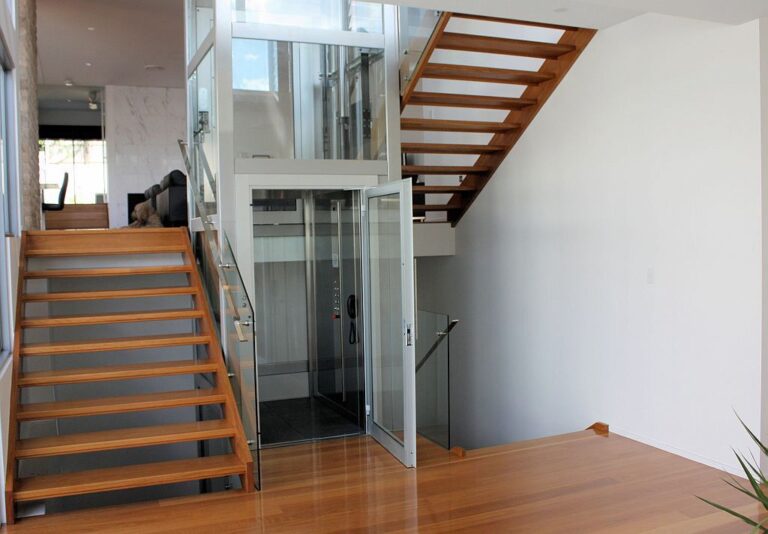
Thinking of installing an elevator lift for home? Adding a lift can make life easier, whether for convenience, accessibility, or adding value to your home. But here’s the question—should you do it yourself or hire professionals?
While a mini lift for home may seem like a simple project, home lifts involve more than just installation. Safety, mechanics, and precision play a big role in ensuring the elevator works perfectly.
- DIY Installation: It might save money at first, but without the right skills, mistakes can be costly. Most elevator brands don’t allow for DIY installations.
- Professional Installation: Experts ensure the job is done safely, correctly, and meets all regulations.
In this blog, we’ll break down the home lift installation process, compare DIY with professional installation, and help you understand what’s right for your home. Let’s make sure your lift journey is smooth, safe, and stress-free.
Key Considerations for Home Elevator Installation
Installing an elevator lift for home involves more than just picking a lift and setting it up. Here’s what you need to think about:
- Safety First: Elevators have complex systems, including motors, safety brakes, and battery backups. Any mistakes during installation could cause serious risks.
- Structural Requirements: Does your home have the right space for the lift? Some lifts need pits, shafts, or reinforced flooring.
- Time and Expertise: DIY installation can take longer and might involve trial and error. Professionals finish the job quickly and correctly.
If you’re installing a mini lift for home, these factors are still important. Professionals not only save you time but also ensure everything works as it should for years to come.
Understanding the Complexity of Home Elevators
Home elevators may look simple, but they involve advanced technology and strict safety measures.
- Mechanics and Safety Features:
Home lifts have systems like motors, control panels, and emergency stops. Modern lifts include safety features like anti-trap systems, child locks, and battery backups. Installing these requires technical knowledge. - Regulatory Requirements:Home elevators must meet local building codes and safety regulations. Professionals know these rules and ensure your lift complies with them. Mistakes in DIY installations can cause fines or safety issues later.
Whether you choose a small mini lift for home or a full-size elevator, understanding these complexities is key to making the right decision.
The Costs of DIY vs. Professional Installation
DIY Installation
- Initial Savings: Doing it yourself can save money on labor costs. However, the savings are often short-term.
- Long-Term Costs: Mistakes in DIY installation can lead to breakdowns, repairs, and safety risks. Fixing these can end up costing far more than hiring professionals in the first place.
Professional Installation
- Professionals ensure the lift is installed safely, quickly, and according to code.
- They test all systems, perform safety checks, and offer warranties. This gives you peace of mind and reduces future costs.
In the long run, professional home lift installation saves time, money, and hassle. It ensures your lift works perfectly from day one.
Pros and Cons of DIY Installation
Thinking about installing a home lift yourself? While it might sound like a great way to save money, it’s important to weigh the good and the bad.
Advantages of DIY Installation
- Save Money on Labor:Labor costs can add up quickly. By doing it yourself, you only pay for the lift and materials.
- A Sense of Pride:There’s a unique satisfaction in completing a project yourself. You learn something new and feel proud of the result.
- Work at Your Own Pace:You control the timeline. No need to wait for someone else’s schedule. You decide when and how to proceed.
Risks of DIY Installation
- It’s Not as Easy as It Looks:Elevators have complex systems. If you miss even a small detail, it can lead to serious safety risks.
- Warranty Problems:Many manufacturers won’t honor warranties if the lift isn’t installed professionally. One mistake could cost you big in repairs.
- It Takes More Time:Without the right tools and experience, installation can take much longer. What starts as a weekend project could stretch into weeks.
Pros of DIY Installation Cons of DIY Installation Save on labor costs Mistakes can lead to safety issues Learn something new Risk of voiding the lift’s warranty Work at your own pace Time-consuming without proper tools
Pros and Cons of Professional Installation
While DIY can sound tempting, hiring professionals for home lift installation is often the safer choice. Let’s look at why.
Advantages of Professional Installation
- Expertise You Can Trust:Professionals know the systems inside and out. They ensure everything works perfectly and meets safety standards.
- Safety Comes First:With professional installation, you don’t have to worry about loose screws or faulty wiring. They test the lift to make sure it runs smoothly.
- Peace of Mind:Professional work keeps your warranty safe. Many companies also offer maintenance plans, so you get long-term support.
Downsides of Professional Installation
- Higher Upfront Costs:You’re paying for expertise and labor, which increases the initial cost.
- Less Control Over Timing:You’ll need to work with their schedule, which might not always match yours.
Pros of Professional Installation Cons of Professional Installation Expertise ensures safety and reliability Higher upfront costs Warranty stays valid Dependence on professionals’ schedules Ongoing support and maintenance offered
Factors to Help You Decide
Choosing between DIY and professional installation for your home elevator depends on what works best for you. Let’s keep it simple.
Budget and Long-Term Costs
- DIY Installation:
- You save money upfront by skipping labor costs.
- But mistakes can be costly later. Repairs and fixes can add up quickly.
- Professional Installation:
- You pay more at the start, but the job is done right.
- No hidden expenses or surprises later.
What’s better? Think beyond today’s savings. A professionally installed lift gives you peace of mind for years.
Type of Home Elevator
The type of lift you choose matters.
- Simple Lifts:
Pneumatic lifts or smallermini lifts for homes are easier to install and need fewer changes to your house. - Complex Lifts:
Hydraulic lifts or larger systems are more technical. They need pits, shafts, and professional hands to get the job done safely.
Ask yourself: Is the lift simple enough to handle alone, or is it better left to experts?
Your Technical Skills
Be realistic about your abilities.
- Do you know how to handle wiring, motors, and safety systems?
- Do you have the tools and experience to install something as critical as an elevator?
If you’re unsure, it’s best to call the professionals. Mistakes can be risky, especially with lifts where safety matters most.
Importance of Warranty and Maintenance
- Warranty Coverage: Most warranties are valid only if professionals install the lift. DIY work might void it, leaving you unprotected if something goes wrong.
- Regular Maintenance:With professional installation, you get support for servicing and regular checks. This keeps your lift running smoothly.
Bottom Line: Protecting your warranty and having reliable support saves you from headaches later.
Why Safety Should Be Your Priority
Your safety—and your family’s—comes first.
- What Can Go Wrong?
Poor installation can lead to malfunctions, injuries, or even breakdowns during use. - Regular Checks Matter: A professionally installed lift is tested to ensure everything works properly—like emergency brakes, safety sensors, and anti-trap systems.
A lift is about comfort, not stress. Installing it correctly keeps you safe and ensures it works without problems.
Final Thoughts: Making the Right Choice for Your Needs
When installing a home elevator, safety and reliability should always come first. While DIY installation might seem like a way to save money, it’s not always the safest option. Professional installation guarantees that your lift is installed correctly, works smoothly, and keeps your family safe.
Whether it’s a mini lift for home or a full-sized elevator lift for home, SWIFT offers solutions that combine quality, safety, and modern design. From advanced models like SWIFT Pro to budget-friendly options like SWIFT Lite, there’s something for every home and need.
Contact SWIFT today for expert advice and a hassle-free installation experience.
FAQs
Yes, it’s theoretically possible, but it requires technical skills and knowledge about wiring, safety systems, and structural requirements. For most homeowners, professional installation is the safer option. Most elevator brands don’t allow for DIY installations.
Improper installation can lead to safety hazards like malfunctions, breakdowns, or injuries. It may also void the elevator’s warranty, costing you more in repairs later.
The cost depends on the type of lift, the home layout, and any structural changes needed. While it’s higher upfront, it ensures safety, performance, and peace of mind.
Some simpler models, like compact or mini lifts for homes, are easier to install. However, even these require careful handling to ensure safety and proper functioning.
Yes, professional installers usually include a warranty with the lift. They also offer regular maintenance services to keep the elevator running smoothly for years.
Get in Touch!










